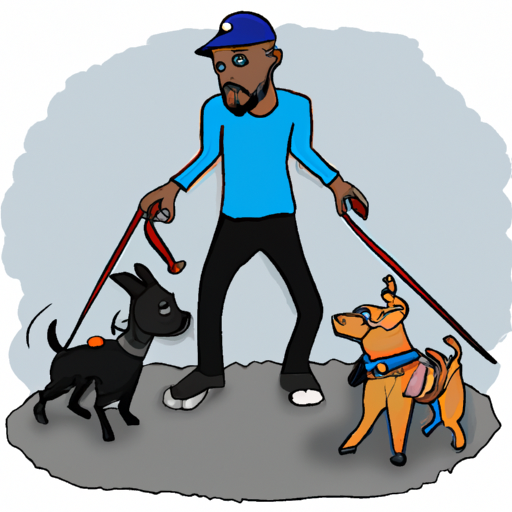Understanding Canine Aggression
Firstly, you need to understand why dogs fight. Dogs can display aggression for a variety of reasons. Often, it’s a form of communication – they’re trying to establish dominance or protect their territory or resources. However, aggression can also stem from fear, frustration, pain, or a learned behavior.
- Dominance: Dogs have a natural social order where certain dogs are more dominant or ‘alpha’. Disputes can arise when a dog challenges another for this dominance role.
- Territoriality: Dogs are territorial animals. They may fight to defend what they perceive as their territory – this could be your home, yard, or even a favorite toy.
- Fear: Fearful dogs may lash out if they feel cornered or threatened.
- Pain: If a dog is in pain, they may become irritable and aggressive. Always check for potential health issues if your dog’s behavior changes suddenly.
- Learned behavior: Dogs can learn aggressive behavior if it gets them what they want. You may inadvertently be encouraging your dog’s aggression without realizing it.
Recognizing Signs of Tension
Paying close attention to your dogs’ behavior can help you prevent fights before they start. Dogs give off several warning signs when they’re feeling uncomfortable or threatened. Here are some signs to look out for:
- Growling or snapping
- Stiff body posture
- Direct eye contact
- Raised hackles (the fur along a dog’s spine)
- Tail held high and stiff
Preventing Fights
Preventing fights involves managing the environment and your dogs’ interactions. Here are some strategies to consider:
- Separate resources: Avoid fights over food, toys, and attention by providing each dog with their own resources.
- Train obedience commands: Teach your dogs commands like ‘sit’, ‘stay’, and ‘leave it’. This gives you control over their behavior and can help defuse tense situations.
- Use positive reinforcement: Reward your dogs for calm, non-aggressive behavior. This could be treats, praise, or petting.
- Socialize your dogs: This can help them learn how to interact appropriately with other dogs.
When Fights Occur
Despite your best efforts, fights may still occur. It’s important to know how to break up a dog fight safely.
| Don’t Do | Do |
|---|---|
| Don’t put your hands near the dogs’ mouths | Use a loud noise to distract the dogs |
| Don’t punish the dogs | Separate the dogs and give them time to calm down |
| Don’t force the dogs to make up | Check for injuries and consult your vet if needed |
Seeking Professional Help
If your dogs continue to fight despite your efforts, it may be time to seek professional help. A professional dog trainer or animal behaviorist can assess the situation and provide tailored advice.
FAQs
Q: Can neutering or spaying help reduce aggression?
A: Yes, neutering or spaying can help reduce hormone-driven aggression in dogs.
Q: Is it normal for puppies to fight?
A: Puppies often play-fight, which is a normal part of their development. However, if the fights become serious or one puppy seems scared, it may be a problem.
Q: Can certain breeds be more aggressive than others?
A: While some breeds have a reputation for aggression, it’s more about individual temperament and socialization than breed.



